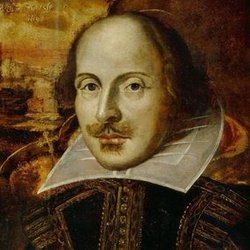Did you know the word ‘Dollar’ was commonly used in England long before the Pilgrim Fathers set sail for America? Below are examples of its usage in two Shakespeare plays:
Macbeth Act I, Scene II:
Rosse: “That now. Sweno, the Norway’s King, craves composition; Nor would we deign him burial of his men. Till he disbursed at Saint Colme’s Inch. Ten thousand dollars to our general use.”
The Tempest, Act II, Scene 1:
Gonzalo: “When every grief is entertain’d that’s offer’d, Comes to th’ entertainer.”
Sebastian: “A dollar.”
Gonzalo: “Dolour comes to him, indeed: you have spoken truer than you purpos’d.”

The word ‘Dollar’ is an anglicized form of the Bohemian word ‘Thaler’ (pronounced taler with a long “a”). Thalers were coins first minted in 1519. They were made of silver that was mined in Joachimsthal in Bohemia. ‘Thaler’ is the shortened form of Joachimsthal.
The word ‘Thaler’ or ‘Taler’ made its way into many languages, including Czech (tolar), several Scandinavian languages (daler), Ethiopian (talari), Persian (Dare) and English (dollar).
In England, before decimalization in 1971, a ‘dollar’ or ‘crown’ was an informal term for five shillings (25 pence in modern UK money) and ‘half-a-dollar’ or ‘half-a-crown meant 2.5 shillings (12.5 pence in modern UK money).
Dollar nicknames
The most common nickname for the US dollar is ‘buck’. The term dates back to the 18th century and may either have originated with the colonial leather trade or from a poker term.
‘Greenback’ comes from the 19th century Demand Note dollars that Abraham Lincoln created to fund the costs of the Civil War for the North. It was printed in black and green on the back.
Some people may say ‘dead presidents’ (because they contain pictures of ex-presidents who are no longer alive), ‘green’ or ‘greenmail’ when referring to dollars.
It all started in a little town in Northern Germany.

